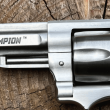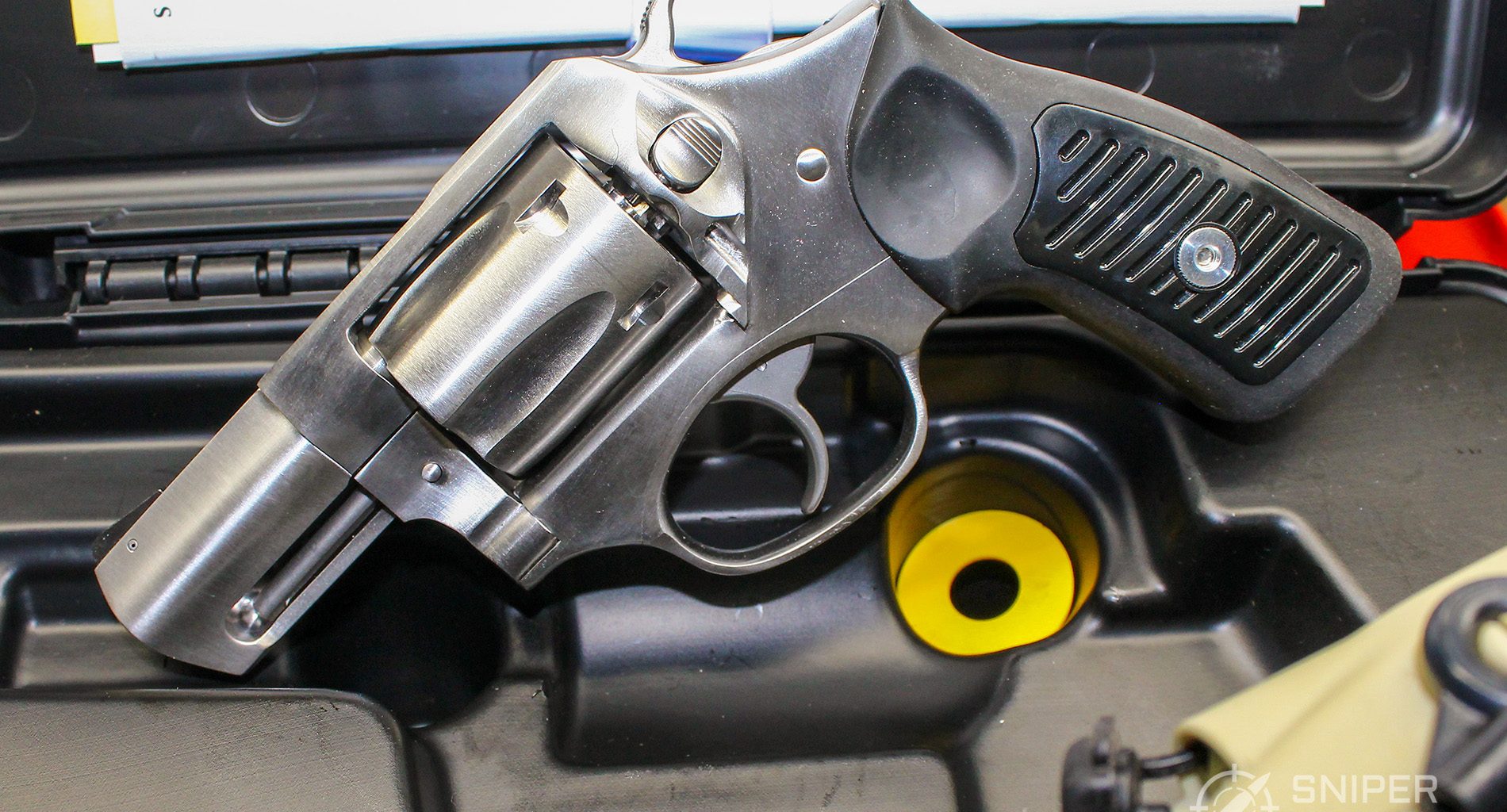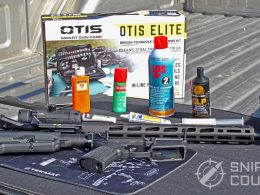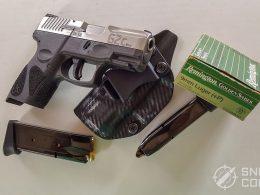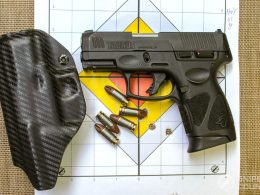In this Article:
The Ruger SP101 is a two-and-a-half-inch barrel on a .357 Magnum revolver. If you have read many of my small-revolver reviews, you will notice that I have reviewed more than a few small revolvers that were in .357 Magnum.
Here are a few of them for you to peruse. This list of reviews also includes .38 Spl. and 9mm guns.
As you read those reviews, you will arrive at the conclusion that I like such weapons. Snub-nosed guns are quickly brought into action, easily operated and effective.
But what are some advantages and disadvantages of a small-frame magnum revolver? Let’s look at just a few of the basics. I will stick to information gleaned from guns I’ve reviewed and am familiar with.
Advantages of a Small-Frame Magnum Revolver
Compact Size
The guns tend to be small. You may easily carry the very lightweight guns in a pocket holster. The other, heavier guns able to be toted effortlessly in a belt holster of some type, either IWB or OWB.
Caliber
All .357 Magnum revolvers will also shoot the .38 Spl., which tends to be less costly and easier in the recoil and muzzle blast departments.
Strength
All of the guns I’ve tested were overbuilt for their purpose, even the lighter-weight ones. They all had beefy frames and cylinders where it counted. Make it a standard to only get well-constructed revolvers. You want your guns to withstand heavy use and last long.
Sights
Most of the guns I’ve tested use the tried-and-true front ramp with a gutter-style rear notch. It’s hard to knock those sights out of alignment. A few even included a fully adjustable rear sight, something I deem necessary if you are going to practice with different loads.
We handloaders appreciate adjustable rear sights. That way, we can develop both light practice loads and heavier thumpers to simulate carry loads. The adjustability also allows you to zero the gun for each load. Although in my experience zeros are not radically different between loads, every little bit of adjustability helps.
Now, let’s talk about its downsides.
Disadvantages of a Small-Frame Magnum Revolver
Now let’s look at this gun from another angle.
The Small Size Isn’t for Everyone
Sometimes a .357 snubby can be too light. I have shot a couple of lightweights that whack your palm with authority.
Strong Muzzle Blast/ Recoil
The bounce, blast, and roar of a full-strength .357 Magnum round going off in a two- or three-inch barreled revolver are not for the faint of heart. If you shoot indoors for whatever reason without hearing protection, you have effectively deafened yourself and taken away whatever night vision you had built up with the tremendous report and muzzle flash.
Unless a load is made specifically for a short-barreled gun, there will be a huge, blinding flash with each trigger pull as the unburned powder exits the muzzle and is lit up.
Recoil is another issue. Shooting magnums out of a non-ported gun can be an experience one doesn’t want to repeat very often. But if you carry one, you definitely need to practice with loads that approximate your carry load, recoil, and blast. If you want to know exactly how much recoil these loads produce, check out our 9mm vs .357 magnum comparison.
Ruger SP101 Hands-On Review
My go-to .357 load is a Lee cast 160-grain semi-wadcutter over 7.1 of Hodgdon Long Shot powder. It gives me almost 1200 fps out of a 4-inch-plus barrel, and around 1100 out of a three-incher. It lets you know you’ve touched off something more than a target load.
I have shot that load out of all the .357s I’ve reviewed, even one or two not on the list above. It’s a good, accurate load. And, in this day and age of non-existent ammo at the store, my handloads are becoming more important.
What tends to happen when I shoot this load in a standard, non-ported-barrel snubby revolver is that my palm feels like somebody just whacked it with a 2×4. Not terrible, mind you, just a good, stout “thump” in my hand. After shooting a few cylinders of it, I’m ready to go to a .38 load or even .22.
If I were to carry one of these short thumpers, I would practice with a stiff-ish .38 load and then end my session with a couple of cylinders of the full-bore stuff in order to keep my hand in and stay familiar with it. Plus, you need to know where your carry load hits on the target. You need to shoot at least some of it every time you practice.
All that changes when I shoot a ported-barrel revolver. The Taurus 692 is one prime example.
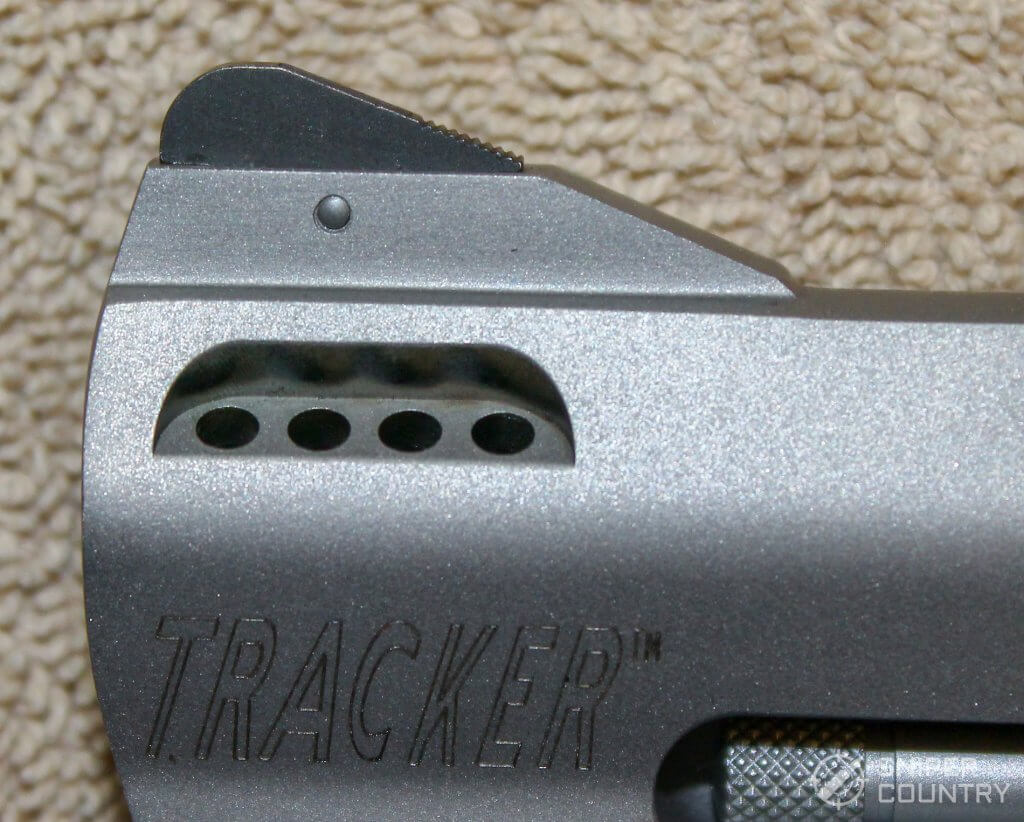
Those four ports on each side of the barrel really work in dissipating recoil. Shooting full charge loads through that little 5-shooter was downright enjoyable.
Do you get the muzzle blast and flash? Sure, maybe even a bit more due to the ports but the recoil is tamed way down. Those gases venting upward really help+ keep the muzzle down and the grip from trying to remove your hand at the wrist.
If you’ve shot a ported magnum (.357, .44, .454, etc.), you know what I’m talking about. If you haven’t, you need to try one. As I said earlier, they do tend to seem louder than non-ported guns but in my book, it’s worth it to quell the recoil.
To Port Or Not To Port?
I think if I were to adopt a snubby .357 to carry, I would get one with ports. Taurus has manufactured several guns with ports, along with some other gun makers, including Smith & Wesson. If you have a gun you want to add ports to. There’s always Mag-na-port in Michigan. They’ve been cutting ports in barrels for decades.
As this is a review of the Ruger SP101 and not a treatise on ported barrels, we will move on. I just think they make sense on a heavy-recoiling revolver like a lightweight .357 snubby.
Ruger SP101 Build Quality and History
Ruger introduce the SP101 in 1989 when they replaced their Security-Six line of duty revolvers. They design these guns for the police, security guards, payroll truck employees, and similarly employed individuals. They were considered plain-jane, B-flat .357, and .38 revolvers.
The SP101 features a very solidly built construction that tended to hold up under a lot of firing. When the company replaced them, it took two different models of Rugers to do that. We know about the 5-shot SP101 series, but the GP100 line of revolvers was introduced at the same time as the SPs. The GPs were the larger-framed, six-shot guns (for the most part, there are exceptions). Both lines are going very strong today.
Variations
You can get an SP101 with a 2.25-, 3- or 4-inch barrel. Calibers include .357 Magnum, .38 Spl. +P, .327 Federal Magnum and .22 Long Rifle.
Want one in blue? No problem. Stainless steel is the default material, however. Need fancier wooden grips? They have you covered. Adjustable rear sight? Sure. Even specialized distributor models are listed on the website.
Also, Ruger uses a one-piece frame that allows some disassembly without tools and also provides an easy grip swap if you want to do that. The grip covers the front and back of the grip frame. It slips on from the bottom and allows your hand total purchase on the grip. Grips that are available from the factory are made of either hard rubber or a black synthetic material. You can get a rubber grip with wood inserts that those look great (below).
Here’s a shot of the longer four-inch barreled gun. Adjustable rear and fiber optic front sights are standard on this model.
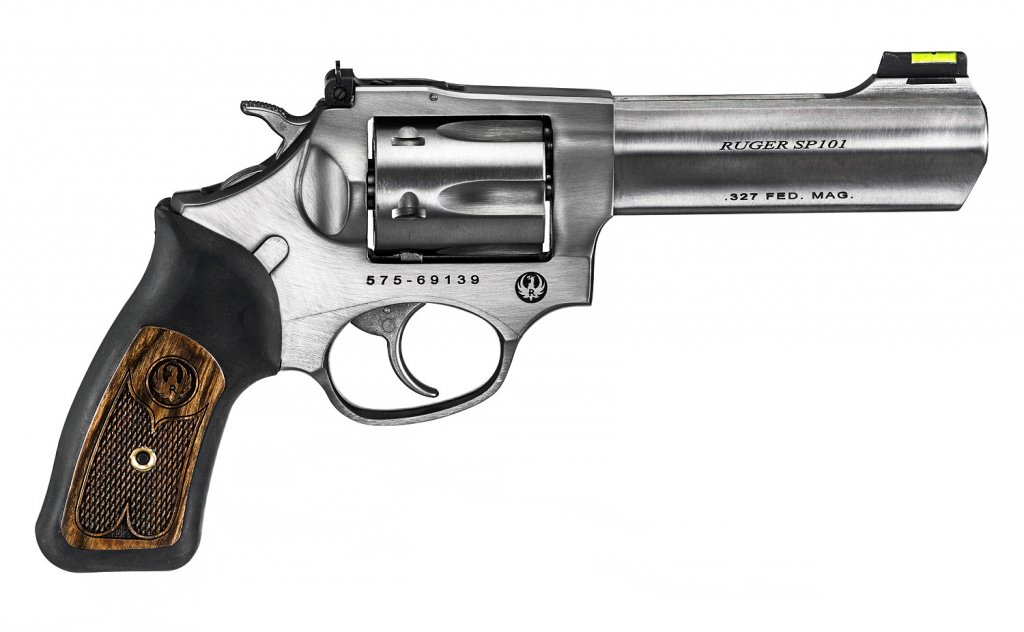
Note the caliber etched on the barrel — .327 Fed Mag. Interesting round, to be sure. That smaller-diameter round allows the gun’s cylinder to hold six rounds. The .22 version holds eight, while the .38/ .357/ 9mm guns hold five. Add in the distributor special editions (one of which places an adjustable rear sight on a three-inch-barreled gun, really handy in my book) and you have fifteen versions in those five calibers to choose from. Not too shabby.
Ruger SP101 Photo Gallery
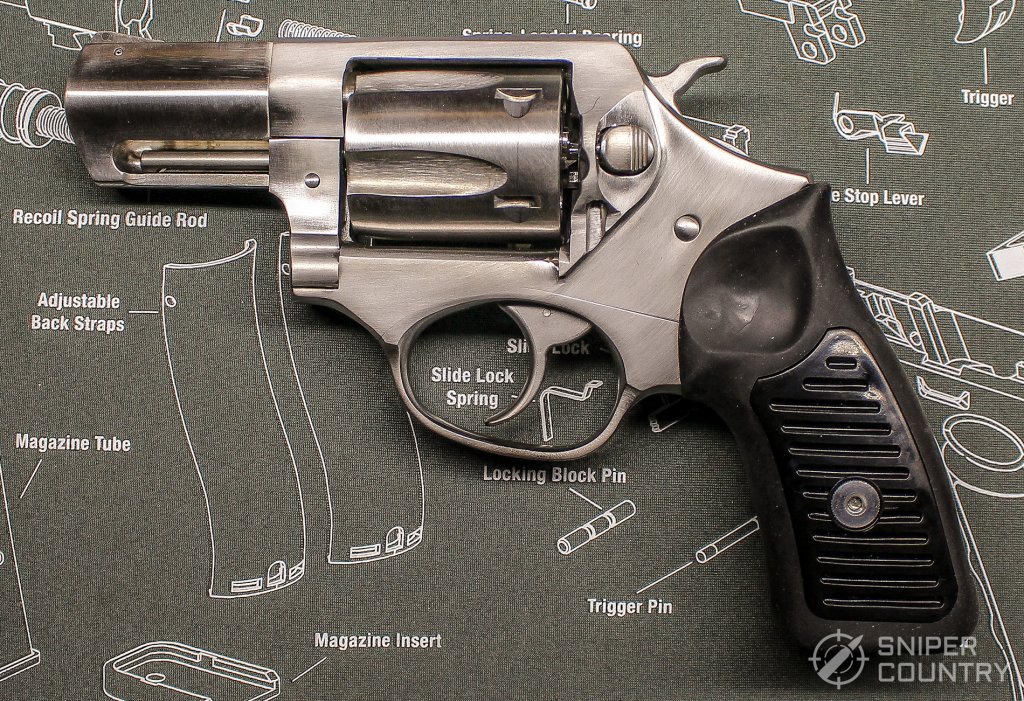
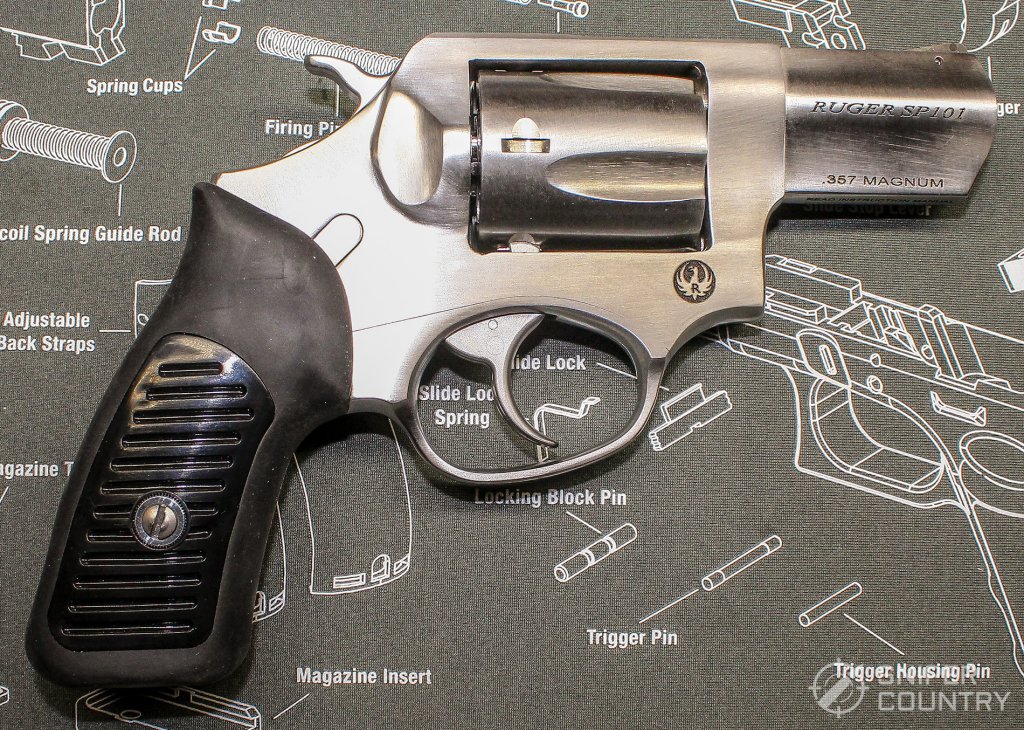
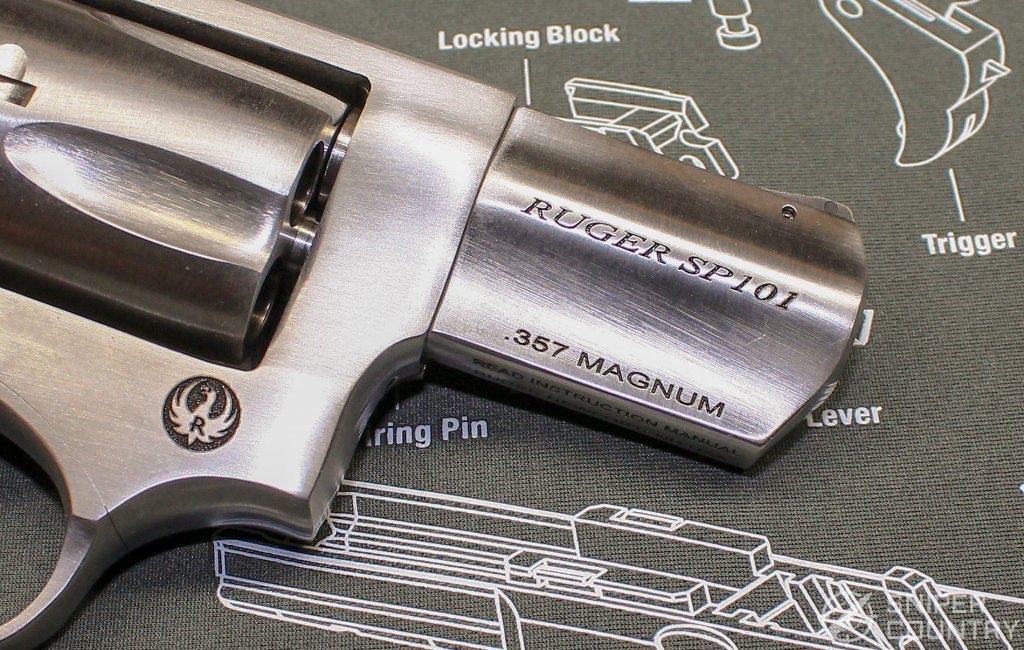
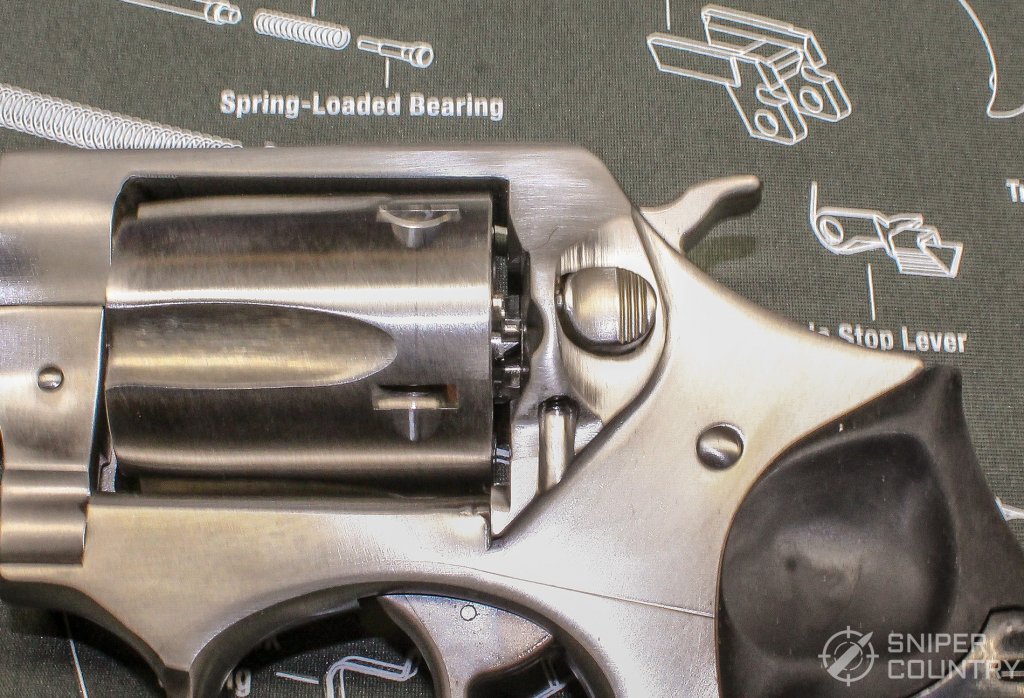
Cylinder latches, rear and front. The lock-up is very secure. The rear latch releases with an inward push, not forward.
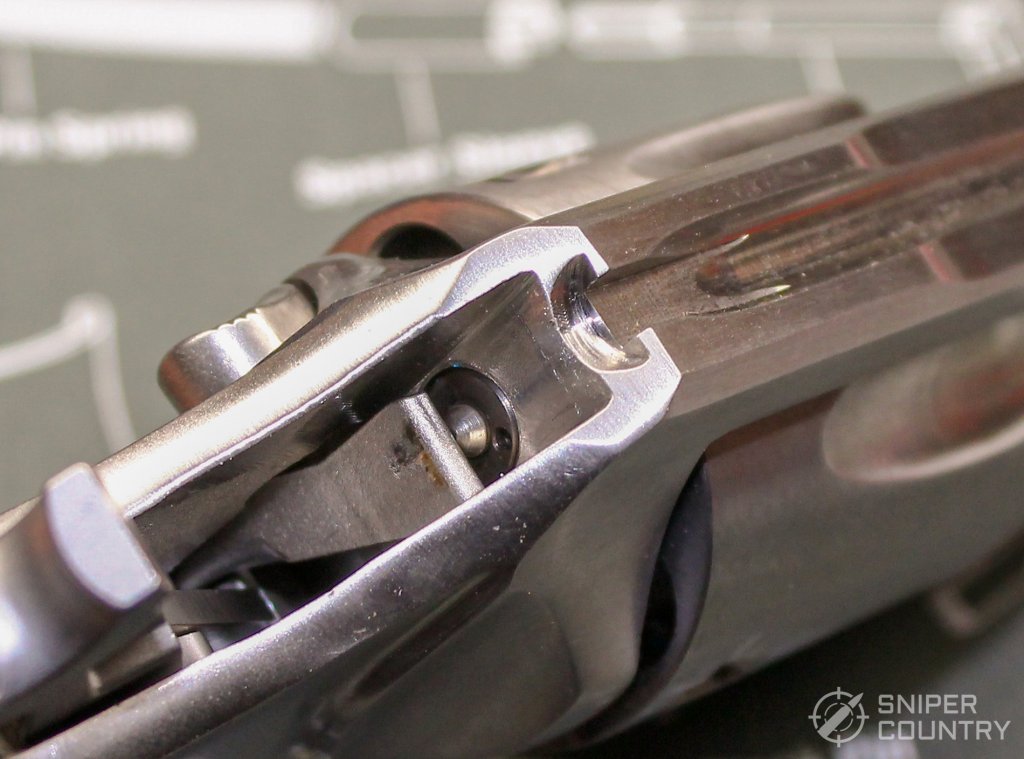
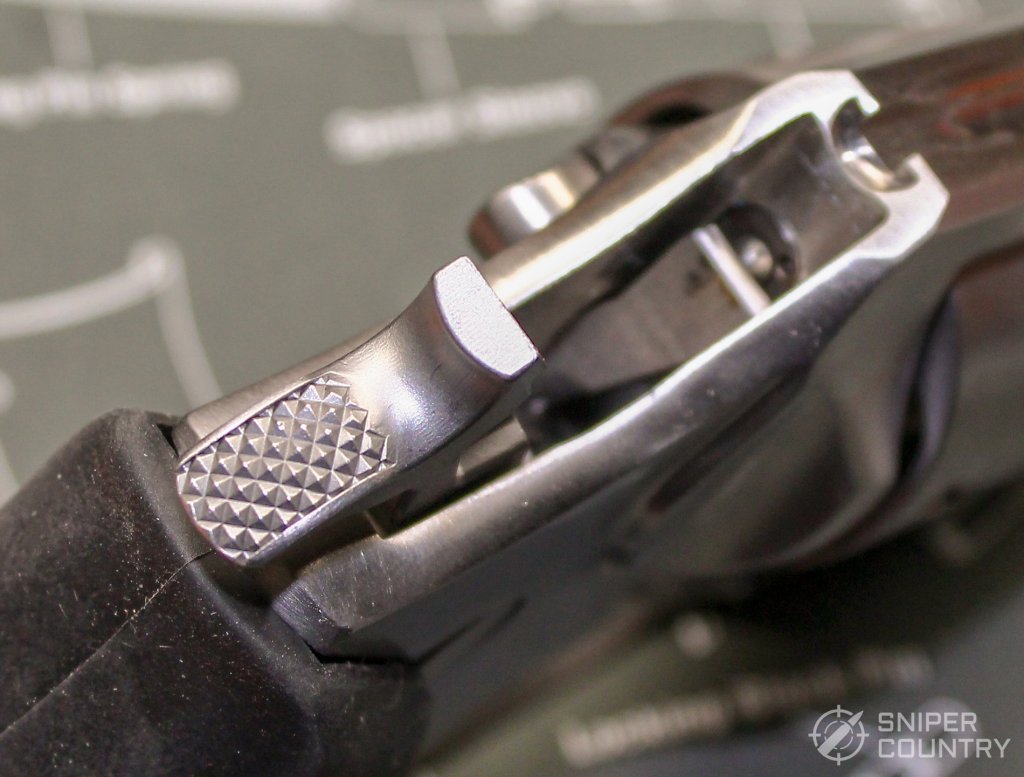
Transfer bar, rear sight and hammer spur. No slipping off this one.
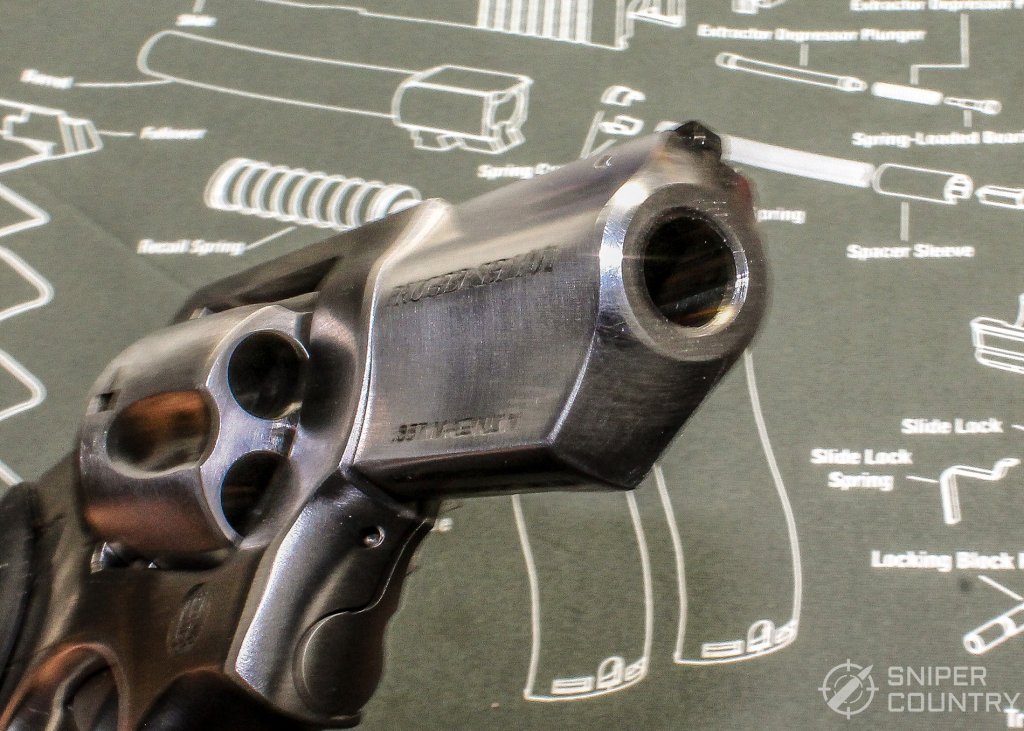
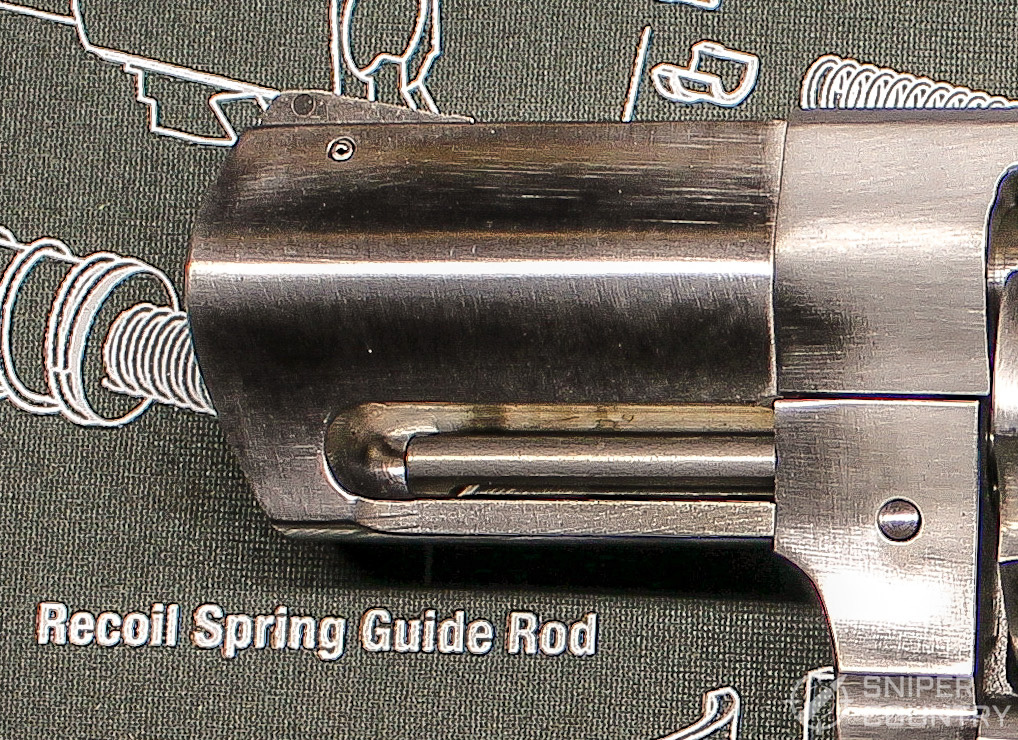
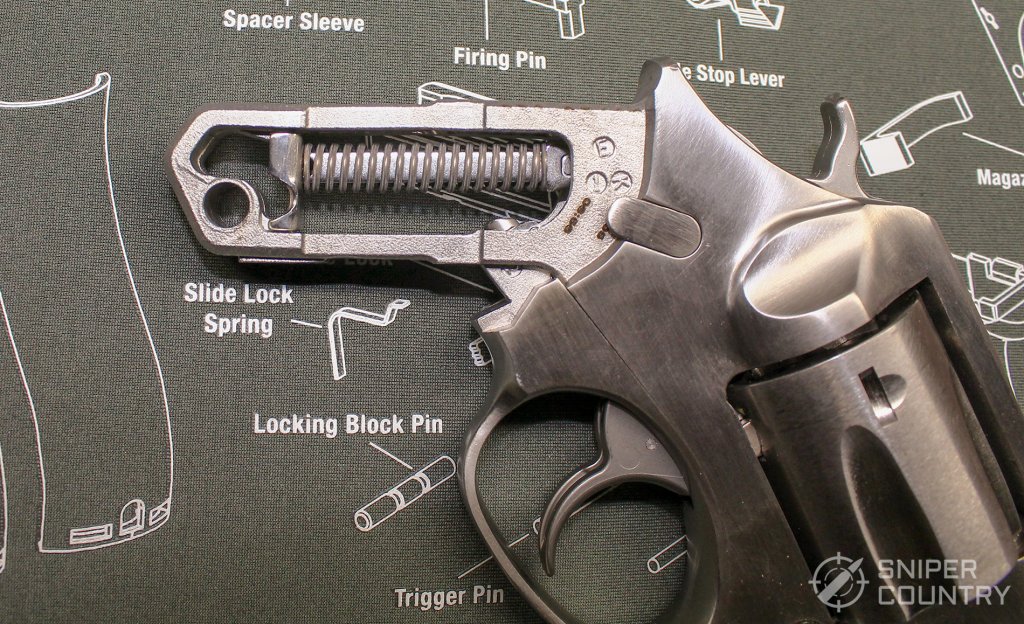

Note the coil mainspring — this configuration allows many different sizes and styles of grip panels. The grip accommodates three fingers.
Shooting the Ruger SP101
The .38 load was OK. It was a Fiocchi factory load, a 158-grain JHP. My one and only .357 load was a handload, the Lee 160-grain SWC over 7.1 grains of Long Shot powder load that I described above.
Conditions were such that I did not have a chance to chronograph either load, but experience tells me that’s the case in terms of velocity out of a short barrel. Other snubby .357s I’ve put that load through usually recorded around 1100 fps — not too bad for a 160-grain bullet.
I shot at 15 yards on a drizzly, snowy day. So these were not necessarily my best efforts but were the best I could do at the time. Anyway, the photos below tell the tale, such as it is.
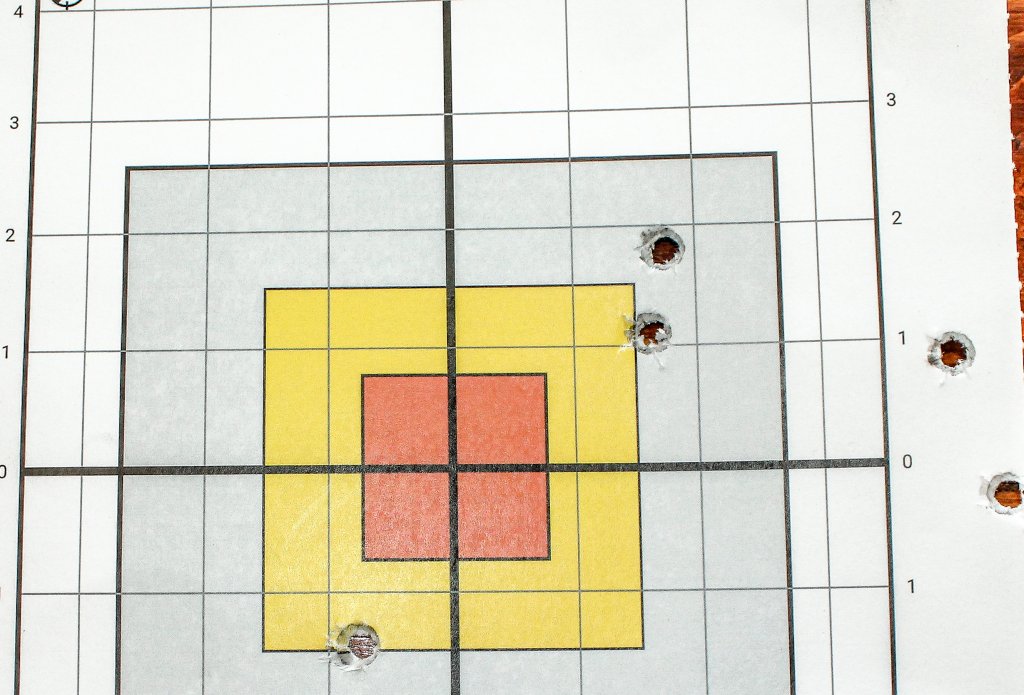
The gunshot was pretty far right with both loads. I used two different aim points for this load. The two shots on the right come from a center target hold and the other comes from a hold on the far-left center middle line at its edge.
The low one was pulled, for sure. The trigger really was decent — under three pounds single action and under nine, double action with no take-up or creep.
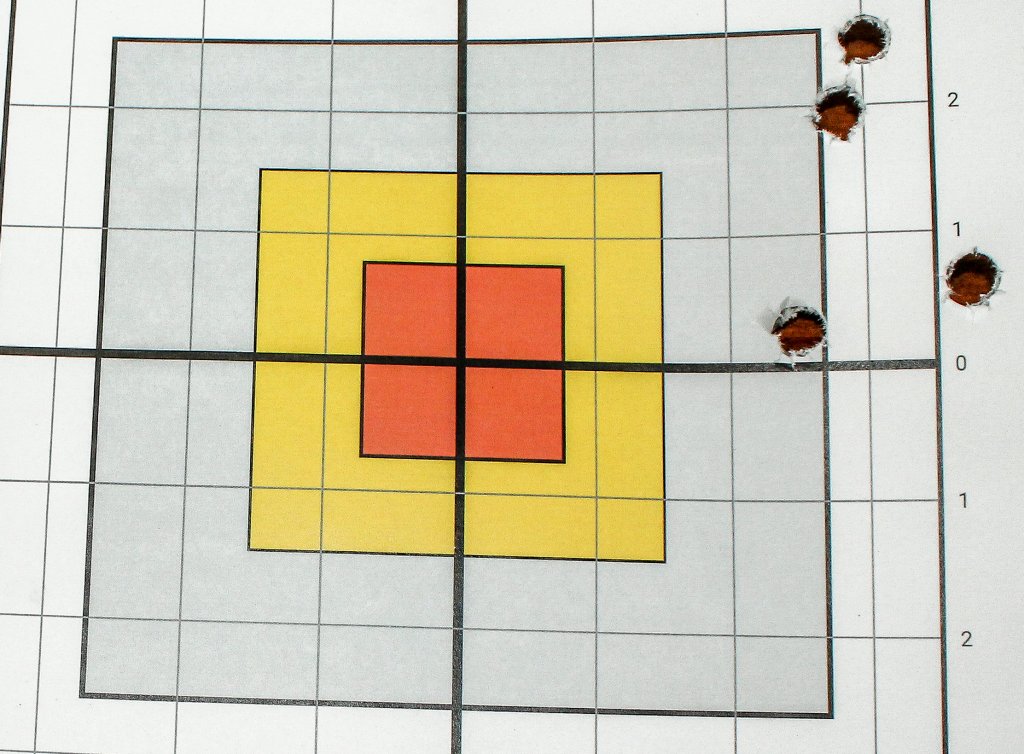
I am not proud of either of these — I can do better, and we all know it ain’t the gun’s fault, for sure. I’m not sure why the groups went right. This gun’s sights are about as basic as they can get. Evidently, my eyes just pushed things to the right.
I’m not sure why I even included these targets, embarrassing as they are — I guess I just wanted to prove I actually shot the gun. As always, more experimentation would yield better results, for sure. Today wasn’t the best day for that. Allow me to explain why these targets are so terrible. They are so bad that I jokingly made up some excuses (gotta find some humor somewhere in all this):
- The snow was swirling around the target and the wind was blowing.
- The clouds have hidden the sun during that time.
- It would help if I had more factory ammo to shoot but that’s the way it is right now.
- My hands were cold.
- I had a wet bench along with my seat and target stand.
- My feet were cold.
- My Walker Game Ear hearing protectors made my ears cold.
- The bullets didn’t go where they were aimed.
OK, have I made enough excuses? Want some cheese with my whine?
Speaking of shooting this little gun, it handled both loads well. I’ve had that particular .357 handload generate some pretty significant recoil in lighter .357s but this 26-ounce gun handled it well. It was actually fun to shoot. I enjoyed it, even given the pattern aspect of my groups.
Ruger SP101 Specs
Before we end this little composition, let’s look at some specifications and features of our test SP101.
| Length: | 7.2" |
| Weight: | 26 oz. |
| Barrel: | 2.25" |
| Capacity: | 5 |
| Action: | DA/SA, transfer bar |
| Trigger Pull: | SA: 3 lbs., 12 oz. DA: 8 lbs., 14 oz. |
| Sights: | Fixed rear gutter, pinned, replaceable front black ramp |
| Material: | Stainless steel |
| Cylinder: | Triple-locking (front, rear, bottom) |
| Grips: | Black Rubber or Black Synthetic... completely covers metal grip frame |
| MSRP: | $719 |
Conclusion
Would I carry this gun? You betcha. It was accurate enough (humorous excuses aside), handy, and powerful enough. So, what’s not to like? I own two .38 snubbies: an S&W 638 and a Taurus 85. Each of those guns is a 5-shooter, the same as the SP101. On paper, the three compare (except for weight). The difference is that the .38 is limited from the get-go, while the .357 has more oomph.
Most experts agree that even though you are not getting velocities out of the .357’s two- or three-inch barrel compared to the six-inches in your gun safe, it is worthwhile to carry the Magnum. You will get increased velocity out of the .357, most things being equal. It does come with a price. Anyone who’s had basic physics could tell you that the more energy that comes out of the barrel, more recoil energy will be generated as well.
But if you are into revolvers, you might want to take a look at one of these. Given Ruger’s build quality reputation and the popularity of the .357 Magnum in a small package. I don’t think you’d go too far wrong. Taking this gun with you (and a reload in a speed loader or speed strip), you would be decently well-armed.
Just make sure you practice at least part of the time with your carry ammo as opposed to lighter .38 ammo. There is a difference between the .357 Magnum and .38 Spl. +P, so practice accordingly. Please chime in below if you own one of these Rugers or similar gun. As always, keep ’em in the black and stay safe.

